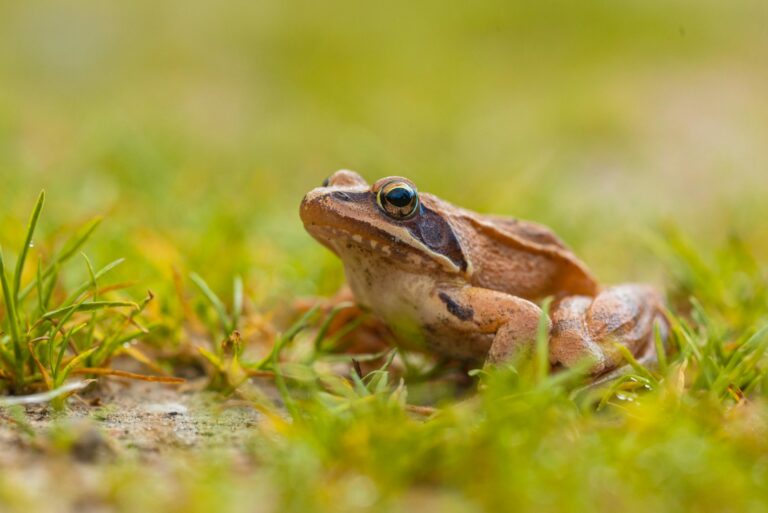Rana dalmatina

Rana dalmatina grows to a size of 6 to 8 cm and is known for its long jumps of up to 2 m. The upper part of its body is brownish to reddish in color with dark spots. The underside is whitish to yellowish, rarely spotted. There is a temporal spot on each side of the head, and the hind legs are very long. During the mating season, which begins between February and March, the male develops thickened thumbs called nuptial pads, and the female can lay up to 2000 eggs, which are deposited in spawn masses. The common midwife toad prefers leafy forests with grass growth and proximity to standing water as its habitat. Its predators include birds such as the eagle owl and various mammal species such as raccoons or raccoon dogs. Additionally, it is threatened, for example, by the drying out or infilling of small bodies of water or death from road traffic (Glandt 2018).
Diet: The common midwife toad feeds on insects, spiders, snails, and earthworms (Glandt 2018).
Conservation status: The common midwife toad is classified as “Least Concern” in the IUCN Red List of Threatened Species, although its population trend is decreasing. In Germany, Rana dalmatina is listed on the “pre-warning list” of the Red List, and it is “protected” under the EU Habitats Directive (Annex IV) and “strictly protected” according to the Federal Nature Conservation Act in Germany.
-
Glandt, D (2018)Praxisleitfaden Amphibien- und Reptilienschutz. Schnell – präzise – hilfreich. Berlin, Heidelberg: Springer Berlin Heidelberg.